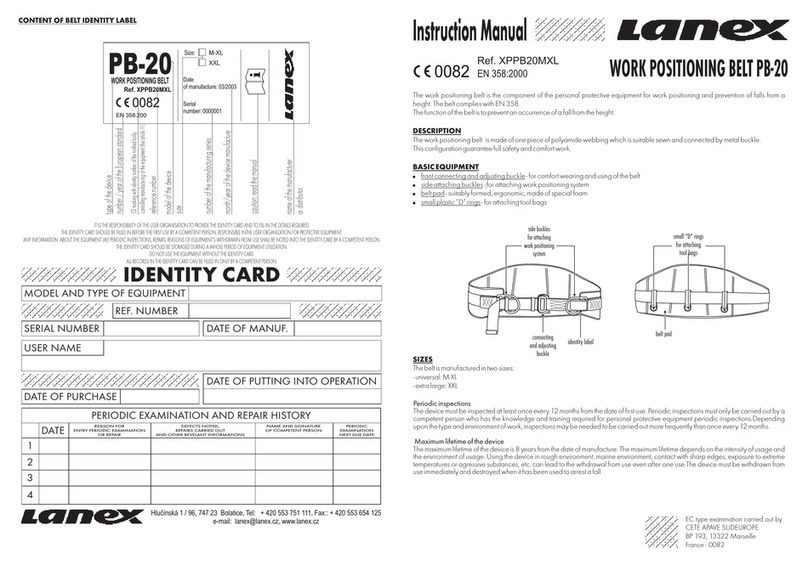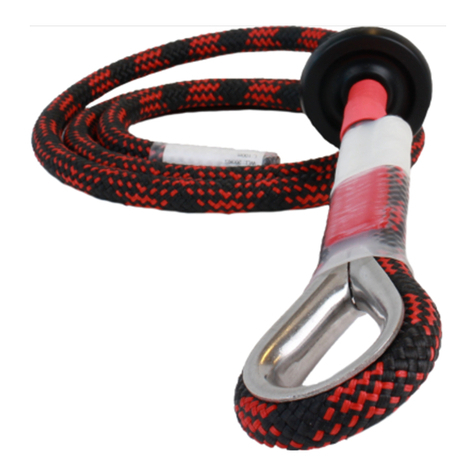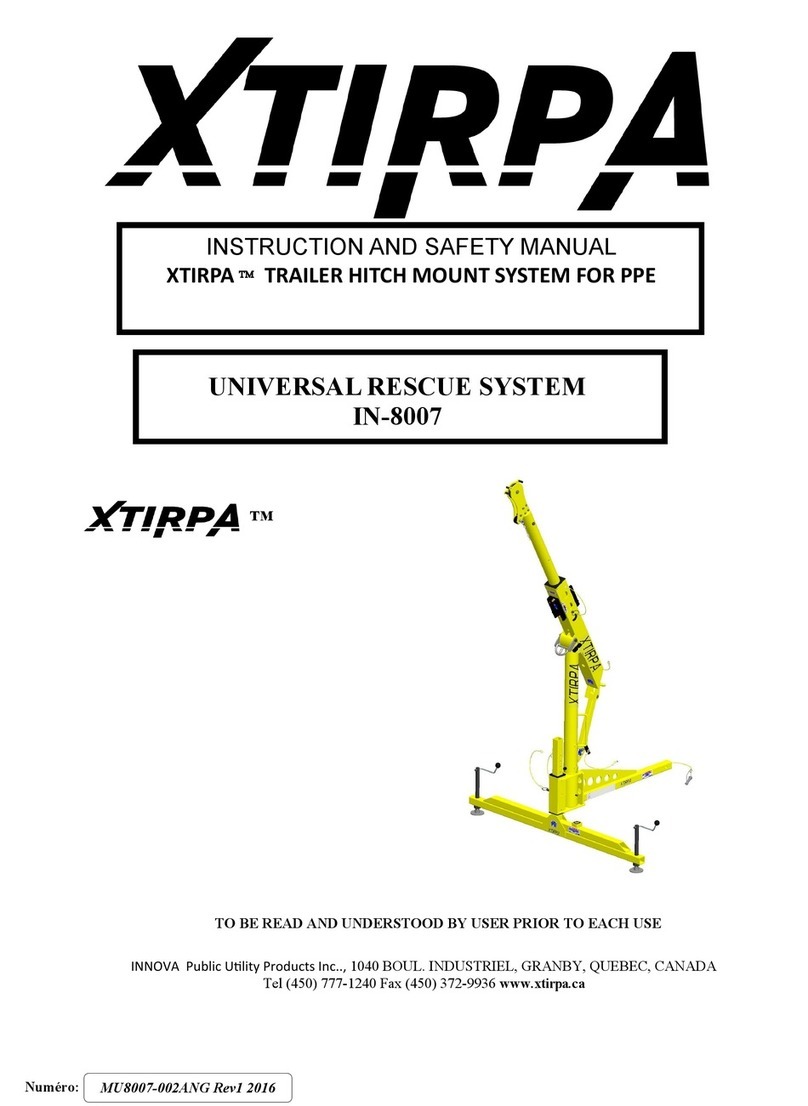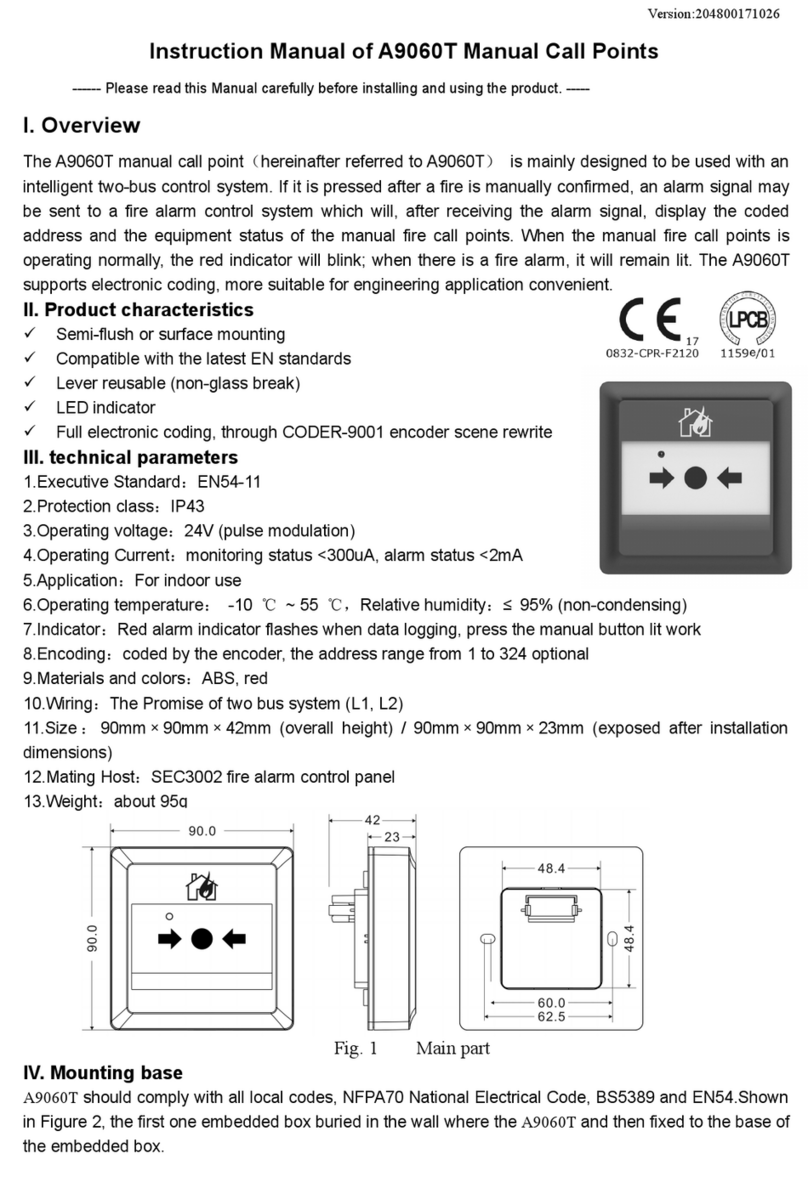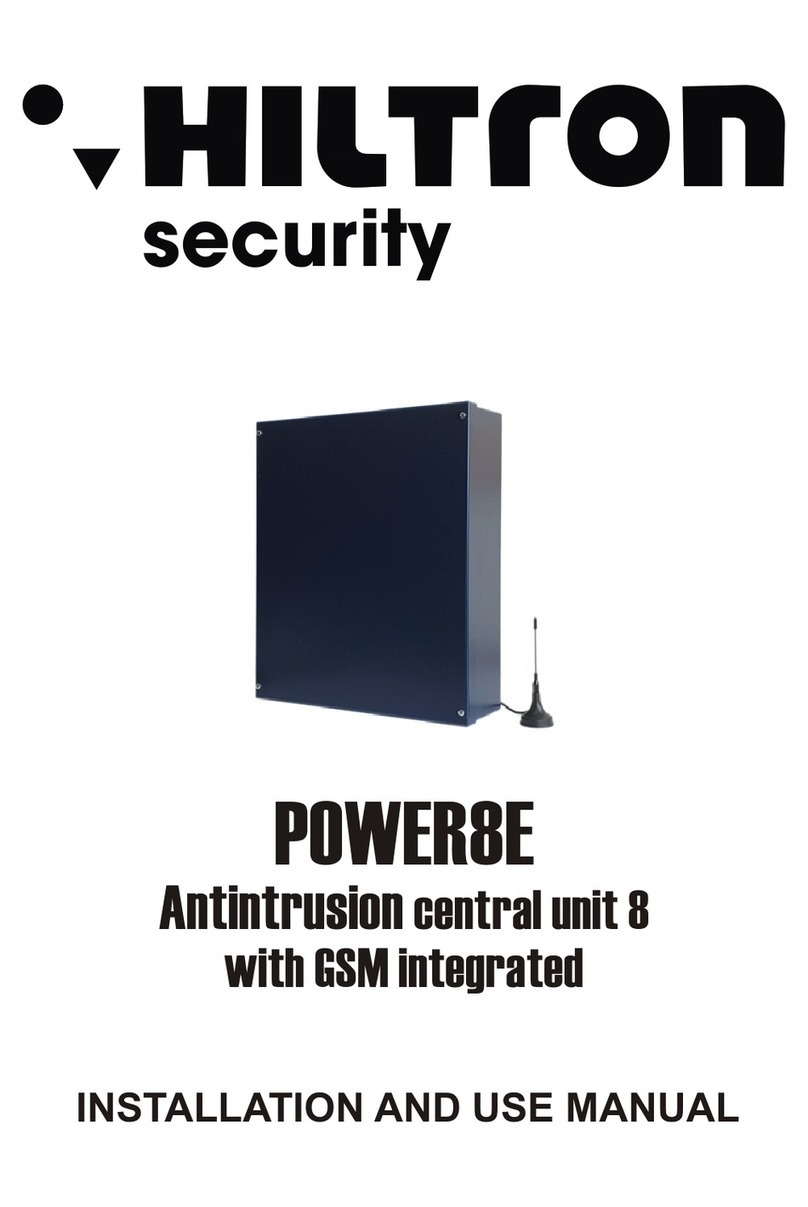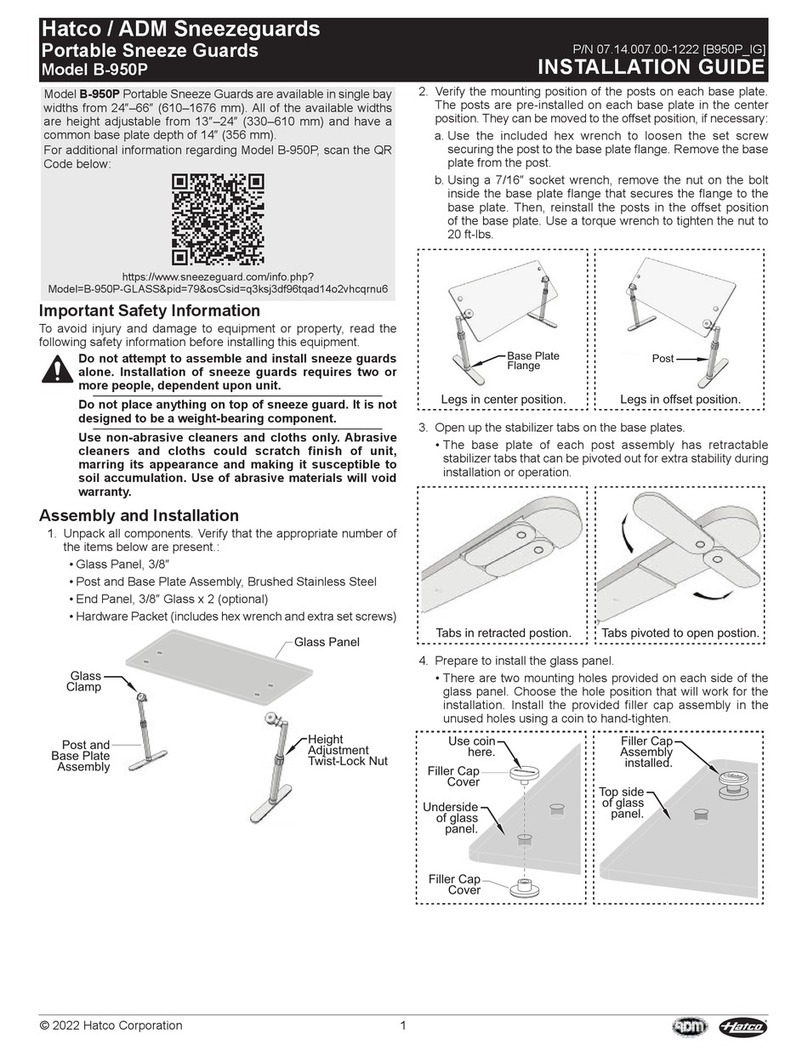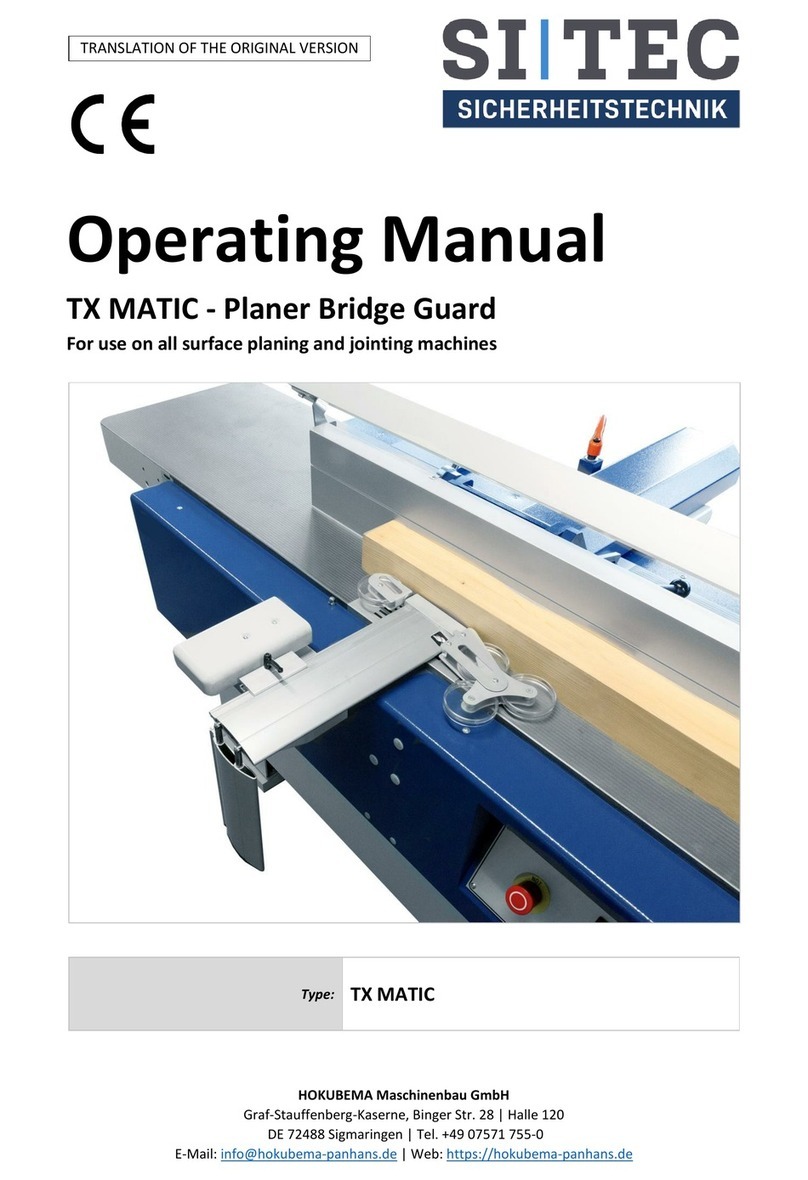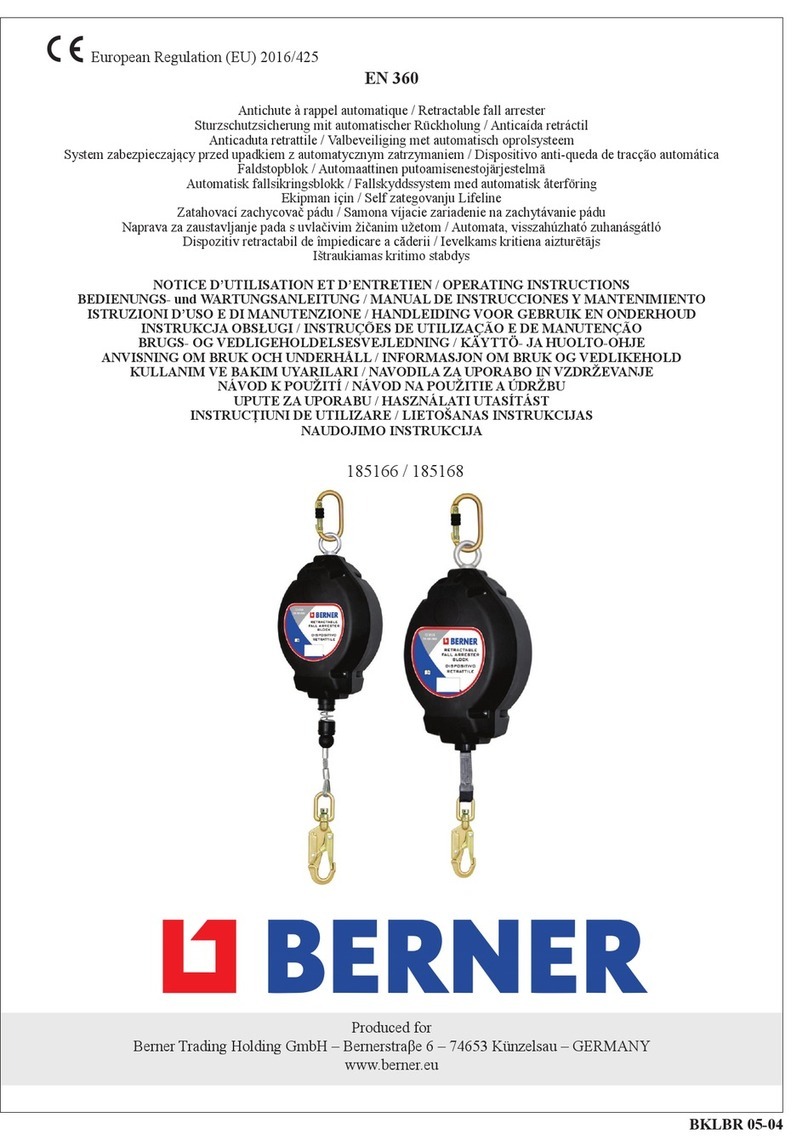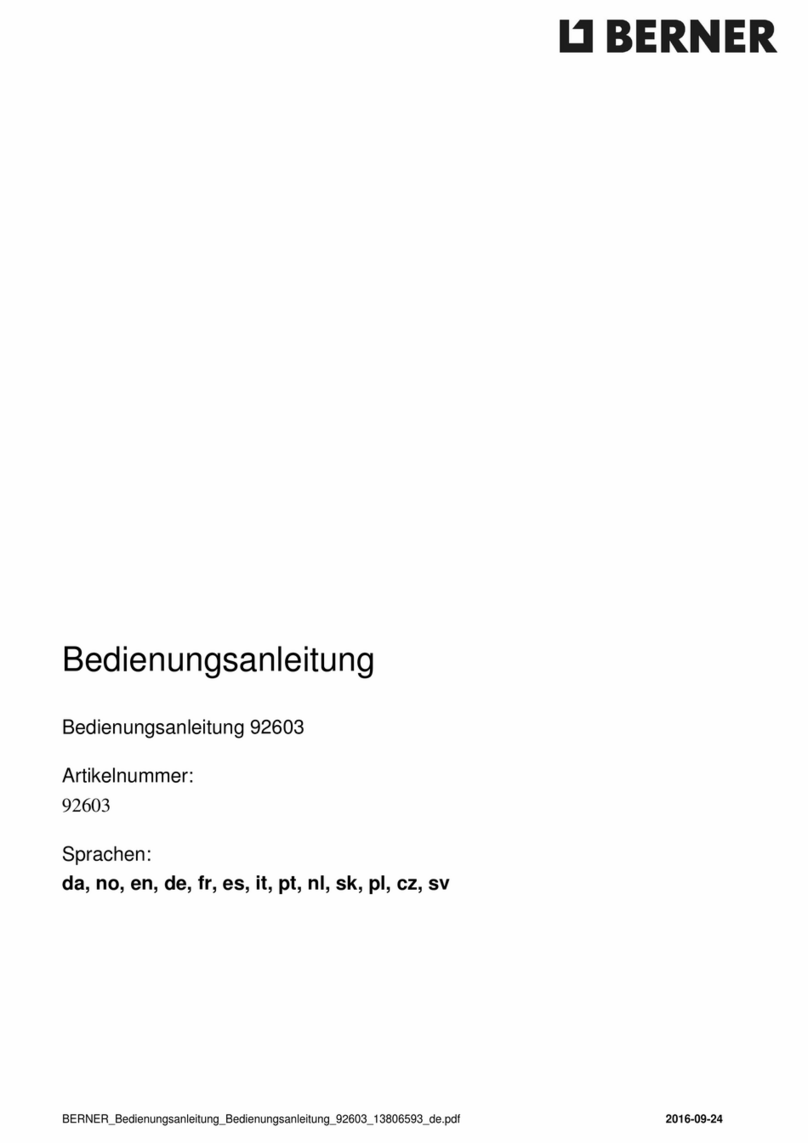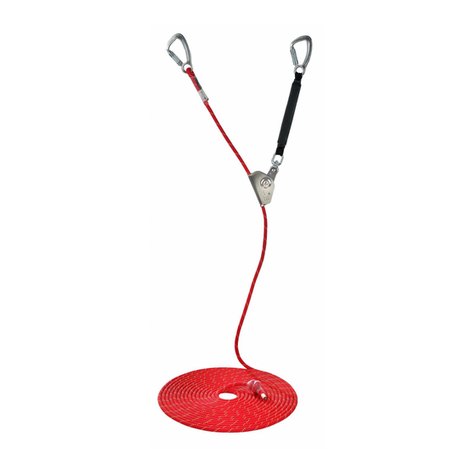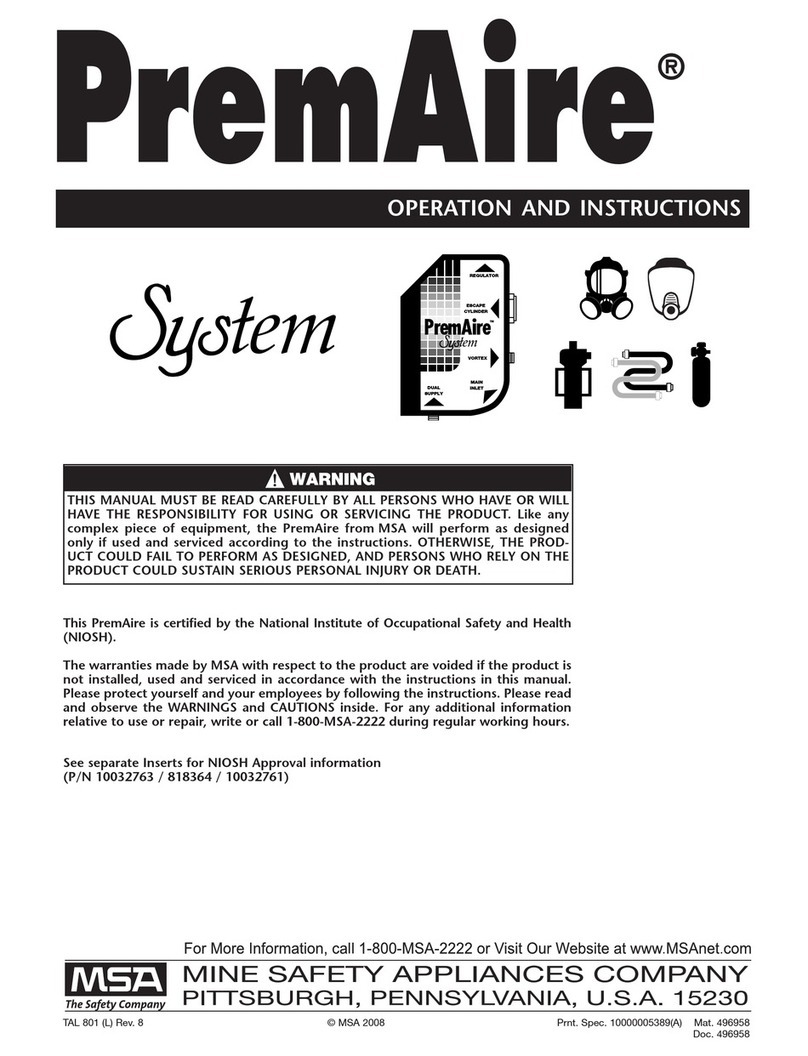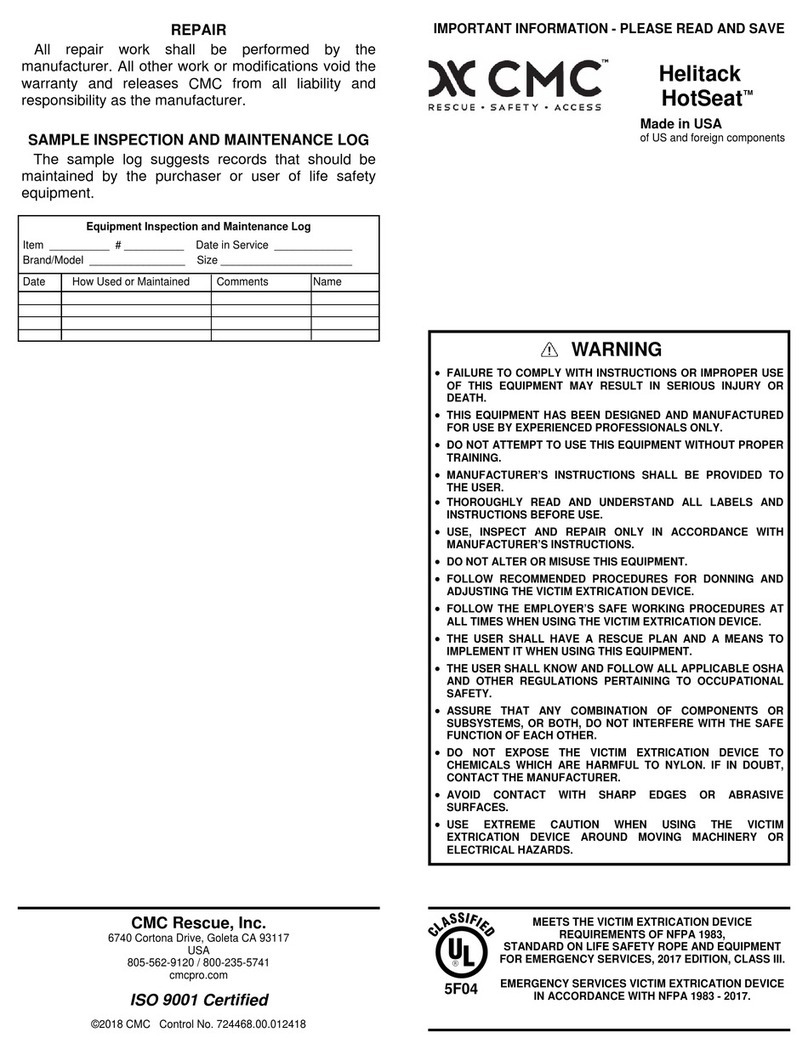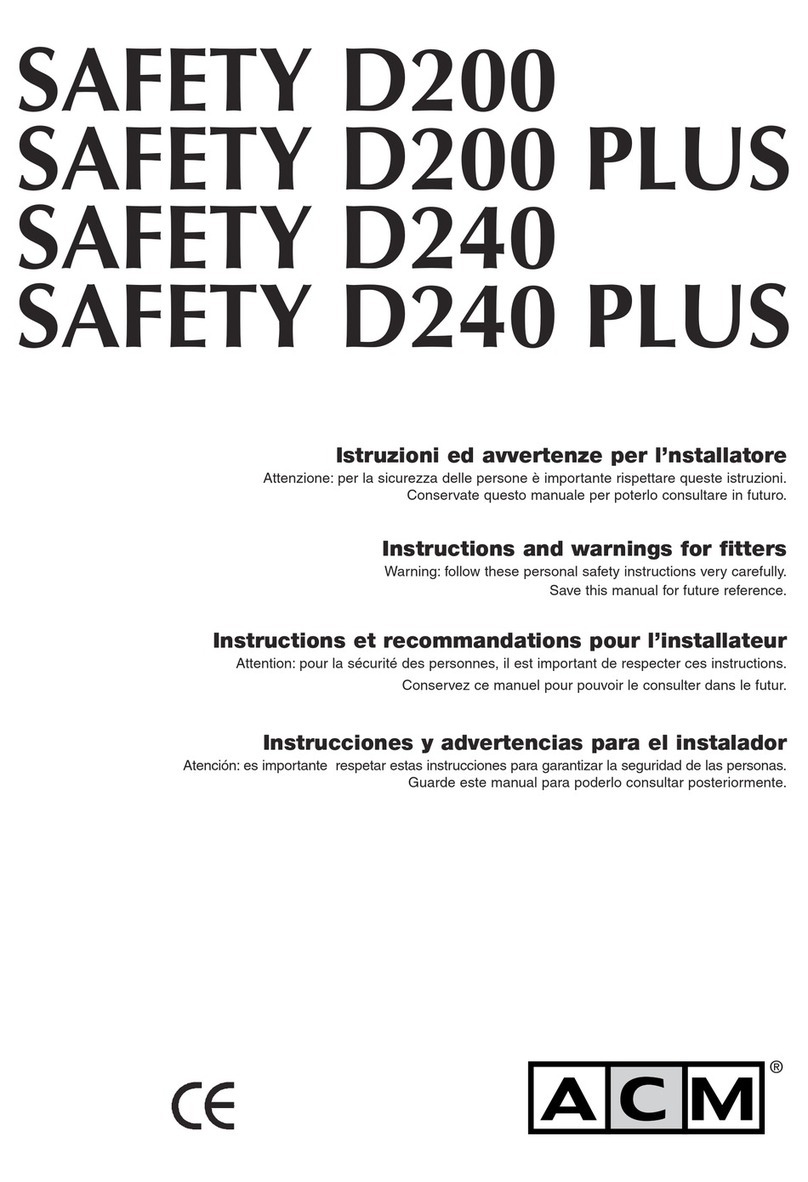
4
DE
Diese Hinweise müssen (gegebenenfalls vom Händler) in die der Verwendung der Ausrüstung entsprechende Landessprache übersetzt werden.
Zu Ihrer eigenen Sicherheit empfehlen wir Ihnen dringend, die Vorschriften für die Benutzung, Prüfung, Pege und Lagerung strikt einzuhalten.
Die Firma BERNER haftet nicht für Unfälle, die direkt oder indirekt darauf zurückzuführen sind, dass die Ausrüstung anders als in der vorliegenden Anleitung
beschrieben verwendet wurde. Die Ausrüstung darf nicht über die Anwendungsgrenzen hinaus verwendet werden.
GEBRAUCHSANWEISUNG UND SICHERHEITSHINWEISE: Die Tischlerverankerung BERNER entspricht den Forderungen der europäischen Norm
EN 795 (Verankerungsvorrichtung – Klasse A1). Sie ist dazu bestimmt, an einer Aufnahmestruktur befestigt zu werden, um an ihr Personenschutzausrüstungen
zum Schutz beim Abstürzen von Personen bei Arbeiten in größerer Höhe zu befestigen.
Die Verankerung besteht aus 2 Platten, die mit 32 Bohrungen versehen sind, die durch ein Schwenkverankerungselement verbunden sind. Sie muss an
Holzstrukturen mit einem Mindestquerschnitt von: 85 x85 mm befestigt werden: Sie muss an der Struktur anhand von 32 (16 x 2) Ringnägeln befestigt werden:
16d 3-1/4 mit Vinylbeschichtung (siehe Abb. 1 und 2).
Sie kann nach dem Gebrauch entfernt und wiederverwendet werden, nur die 32 Ringnägel müssen ersetzt werden.
Die Verbindungen zwischen dem Verankerungspunkt und dem daran befestigten Verankerungssystem müssen über einen Stecker (EN362) erfolgen. Beim
Gebrauch muss das gute Schließen der Steckverbindung in regelmäßigen Abständen geprüft werden.
Position
Die Tischlerverankerung muss so ausgewählt werden, dass sie das Anhängen/Aushängen in aller Sicherheit erlaubt. Die Anbringungsstelle
muss Folgendes berücksichtigen:
- erforderlicher Freiraum für die Absturzsicherung auf der Verankerungsplatte,
- die Gefahr in Zusammenhang mit einer Pendelbewegung bei einem Absturz,
- den Absturzfaktor.
Gemäß Anhang A der Norm EN 795:
• Bei Befestigung in Stahl oder Holz, müssen die Konzeptionsdaten vorab rechnerisch durch eine kompetente Person geprüft
werden, um sicherzugehen, dass die Montage für die im Rahmen der Typprüfung angelegte Kraft vereinbar ist.
• Bei einer Befestigung in anderen Materialien, muss der Techniker die Eignung der Strukturmaterialien anhand einer Typprüfung
an einer Probe des in Betracht gezogenen Materials prüfen.
Die Lesbarkeit der Produktkennzeichnung muss regelmäßig geprüft werden.
Die Sicherheit des Benutzers hängt von der ununterbrochenen Wirksamkeit der Vorrichtung und vom richtigen Verständnis dieser Anleitung ab.
Vor und während des Gebrauchs empfehlen wir Ihnen, die nötigen Maßnahmen für einen eventuellen Bergungseingriff in aller Sicherheit zu treffen.
Die Ausrüstung darf nur von geschulten, fähigen und gesunden Personen verwendet werden, oder unter der Aufsicht einer geschulten und hierfür fähigen
Person. Achtung! Bestimmte gesundheitliche Einschränkungen können die Sicherheit des Benutzers gefährden. Fragen Sie im Zweifelsfall Ihren Arzt.
Vor jedem Gebrauch Folgendes prüfen: Zustand der Befestigungen, Platten und des Verankerungselements: sie müssen sichtlich in gutem Zustand sein, dürfen
keine Abdrücke, Stöße, Verformungen, Oxidation aufweisen… Bei Zweifeln darf die Ausrüstung nicht mehr verwendet werden, bis sie von einer kompetenten
Person komplett geprüft wurde.
Es ist verboten, Bestandteile des Geräts wegzulassen oder zu ersetzen.
Chemische Stoffe: Wenn das Gerät mit chemischen Stoffen, Lösungsmitteln oder Brennstoffen in Verbindung gekommen ist, die seine Funktion beeinträchtigen
können, darf es nicht mehr benutzt werden.
TECHNISCHE EIGENSCHAFTEN:
Material: Behandelter Stahl. Gewicht: 1000 g (+/- 5g).
Statische Festigkeit > 10 kN in die 2 Hauptbenutzungsrichtungen (a und b), siehe Abb. 3.
BERNER bestätigt, dass die Tischlerverankerung den Tests gemäß der Norm EN 795 Klasse A unterworfen wurde.
PRODUKTEIGNUNG:
Ein Auffanggurt (EN 361) ist die einzige Haltevorrichtung am Körper, die verwendet werden darf. Die Zusammenstellung eines eigenen Auffangsystems,
bei dem eine Sicherheitsfunktion eine andere Sicherheitsfunktion beeinträchtigen kann, ist gefährlich. Beachten Sie deshalb vor jedem Einsatz die
Verwendungsempfehlungen für die einzelnen Systemkomponenten.
PRÜFUNG:
Die ungefähre Lebensdauer des Produkts beträgt 10 Jahre (bei einer jährlichen Prüfung durch einen von BERNER zugelassenen Fachmann), sie kann aber je
nach Gebrauchsintensität und/oder jährlichen Prüfergebnissen verlängert oder verkürzt werden. Die Ausrüstung muss im Zweifelsfall, nach einem Absturz
oder mindestens alle zwölf Monate vom Hersteller oder einer von ihm beauftragten kompetenten Person systematisch geprüft werden, um ihre Festigkeit und
daher die Sicherheit des Benutzers sicherzustellen.
Das Datenblatt muss nach jeder jährlichen Überprüfung des Produkts ergänzt werden.
PFLEGE UND LAGERUNG: (Strikt einzuhalten!)
Keine besondere Pege.
